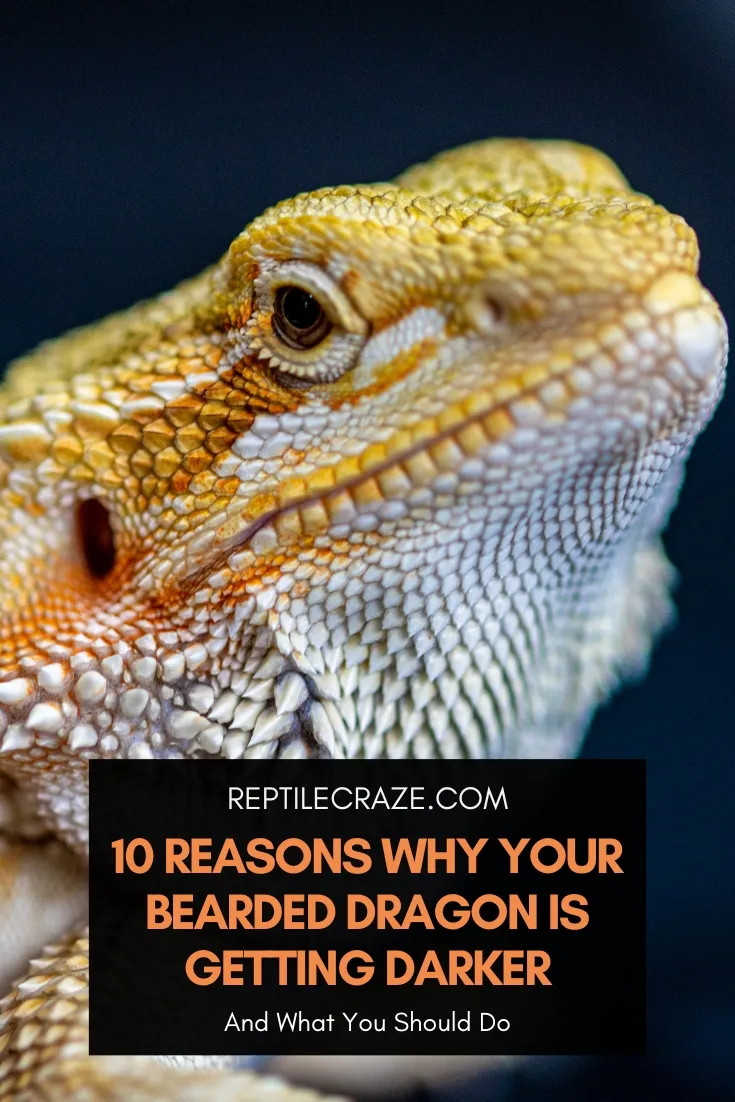
Bearded dragons don’t change colors overall, but their skin (specifically their beards) can sometimes go darker. If you’ve noticed your reptile changing colors recently and wondered why, here’s some insight.
Bearded dragons can go darker when stressed or frightened. They can also change hues due to environmental factors like brumation or temperature changes. There are several other reasons, but most can be addressed once the cause is identified.
While beardies getting darker isn’t always a cause of concern, it’s best not to ignore such signs in case of a health issue. That’s where we can help. This article will explore why a bearded dragon may darken in color and how dragon parents can help their pets.
Table of Contents
Causes of Bearded Dragons Going Darker
If you’re worried about your dragon going darker, here’s a comprehensive list to help you identify the cause. We’ve also added parallel remedies to help our readers care for their scaley friends better. Ready?
1. Stress and Anxiety
Bearded dragons are known to change their color when they are stressed. But here’s what’s tricky – beardies can develop stress due to various reasons.
For example, loud noises, too much activity around your pet’s enclosure, and being wrongly handled can all contribute to your reptile’s anxiety.
If you observe your bearded dragon is getting darker, it may be a sign of stress. This is especially true when other anxiety symptoms materialize, like lack of appetite, lethargy, hiding, and aggression.
If your pet lizard is stressed, you can take a few actions to help. First, ensure your dragon has a proper diet and gets enough water. Second, create a comfortable and stress-free environment for your pet.
This includes providing an adequate heat source, an appropriate lighting setup, and a comfortable place to hide or sleep. Finally, if your dragon enclosure includes more than one inhabitant, note that keeping one dragon per
Beardies are solitary creatures and have a high territorial streak. Holding more than one lizard per
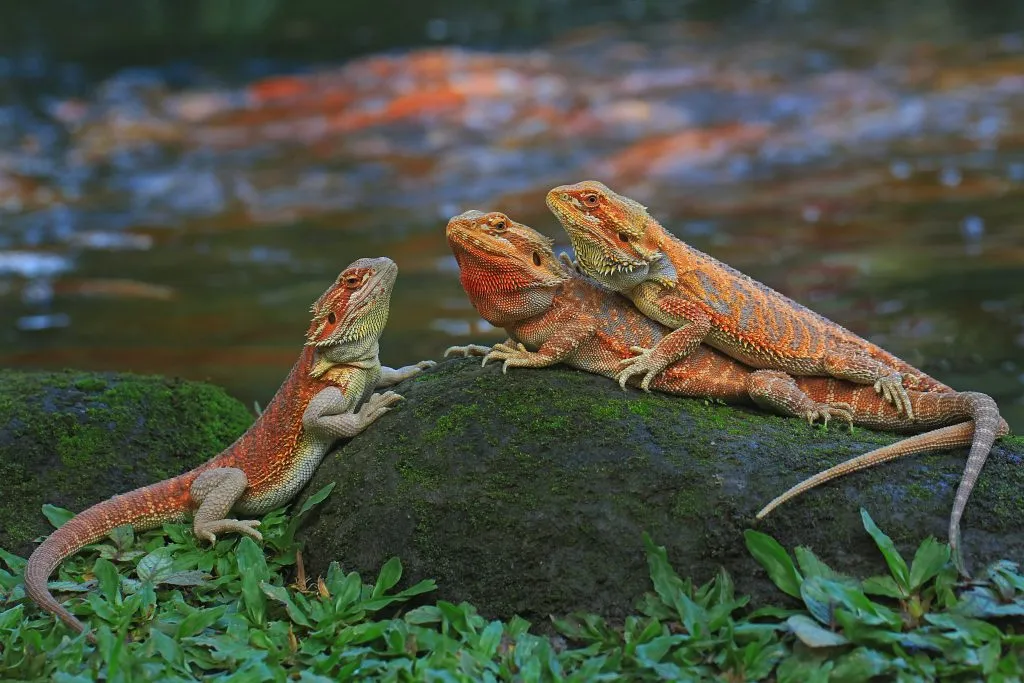
2. Fear
Since bearded dragons tend to go darker when they experience strong emotions, they also change colors when something spooks them.
Now, it’s not always easy for dragon owners to tell the difference between anxiety and fright since these reptiles puff up and darken their beards in both cases.
However, you can gauge the difference between stress and fear by observing your lizard’s surroundings. For example, dragon owners with canines in the household often notice their reptiles puffing up when a dog strays too close to the terrarium.
If your bearded dragon has been sensitized to the other pets in the household, you can expect your reptile to fear their presence. That’s natural, considering bearded dragons are pretty wary by nature.
If you notice tail twitching or frenzied activity along with color changes, there’s a good chance your dragon is scared of something. In such situations, the easiest way to calm your reptile is to discover and remove the source of contention.
For instance, until your reptile gets acclimated to the presence of other pets, it’s best to locate the terrarium somewhere dogs, cats, or other animals have no access.
It’s best not to ignore such problems because, eventually, the fear will lead to your lizard developing anxiety, which can directly impact its health.
3. Territorial Behavior
You’ve likely heard beardies are highly territorial creatures. That’s one reason why they tend to prefer their own company.
If you’ve housed more than one dragon in an enclosure, the darkening of your reptile’s skin can signify territorial instincts. In other words, one of your reptiles is telling the other to keep away and maintain distance.
Darkening skin color, beard puffing, head bobbing, and tail lashing are all signs of aggression linked strongly to territorial behavior.
Think of these red flags as the calm before the storm because it means your reptile
Experts recommend keeping only one bearded dragon per reptile
4. Illness
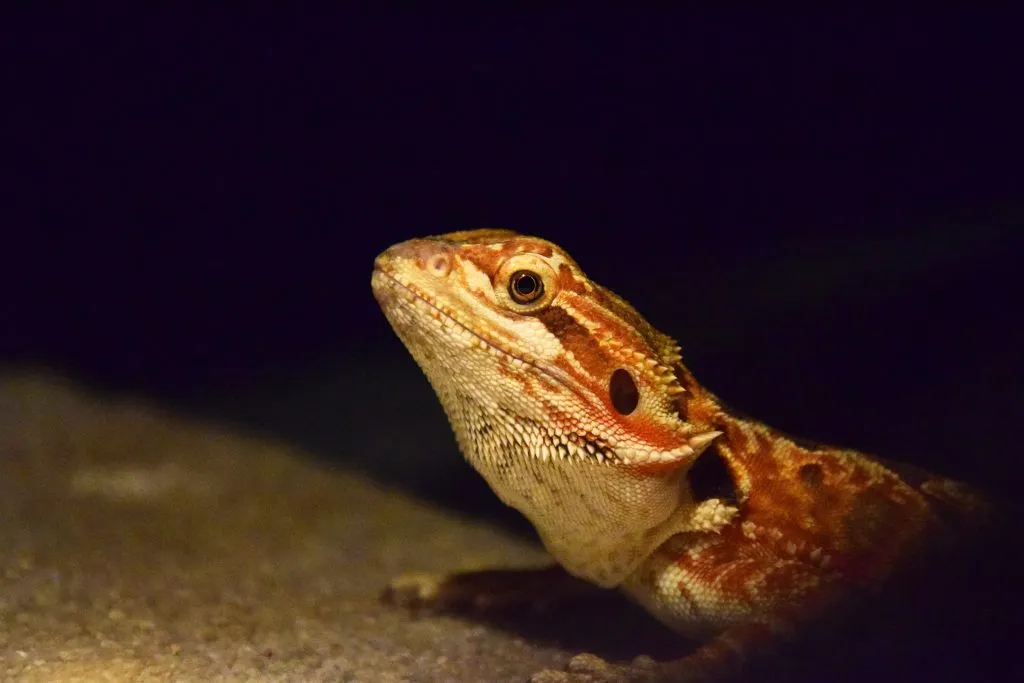
While fear or anxiety isn’t too worrying when it comes to bearded dragons changing color, it is possible that darkening could be a sign of illness.
Generally, when beardies fall sick, they tend to experience lethargy, inappetence, and an overall feeling of malaise.
This naturally leads to the animals feeling stressed. Therefore, it’s not uncommon for ill or injured bearded dragons to develop a darker hue during such times.
Dragons are susceptible to various illnesses, from respiratory infections to parasites. That means it’s not always possible for dragon owners to identify what their pet is suffering from accurately.
Nonetheless, it’s best to book a vet’s appointment immediately if your reptile displays symptoms such as listlessness, inappetence, diarrhea, weight loss, etc.
Also note that early detection of any disease increases the chances of a complete recovery, which is what you want for your bearded dragon.
Illnesses can get out of hand very quickly when dealing with young, old, or immunocompromised bearded dragons.
5. Impaction
Believe it or not, bearded dragons can get darker due to gut impaction. Impaction occurs when your dragon is unable to pass stool due to a blockage in their digestive system.
In other words, your reptile is unable to poop. While constipation isn’t too big of a concern in the human world, impaction can prove very dangerous for beardies.
If your bearded dragon is impacted, it may become lethargic, lose its appetite, and have difficulty moving. In severe cases, the mass (of waste) in the gut can press down on nerves and lead to hind leg paralysis.
If you think your pet lizard is impacted, it’s essential to seek veterinary care immediately. Your vet can perform diagnostic tests (generally x-rays) to determine the cause of the impaction and recommend the appropriate treatment.
Vets typically recommend warm water soaks or laxatives in mild impaction cases. However, the more extreme circumstances may require surgery to remove the blockage.
To prevent your beardies from developing impaction in the future, pay special attention to their diet. Adult bearded dragons need to consume a diet that consists of 25 percent protein and 75 percent veggies to keep their digestive systems ticking like clockwork.
Tip: If your bearded dragon is not pooping, read our article on that here! It will show you what you should do now.
6. Temperature Changes
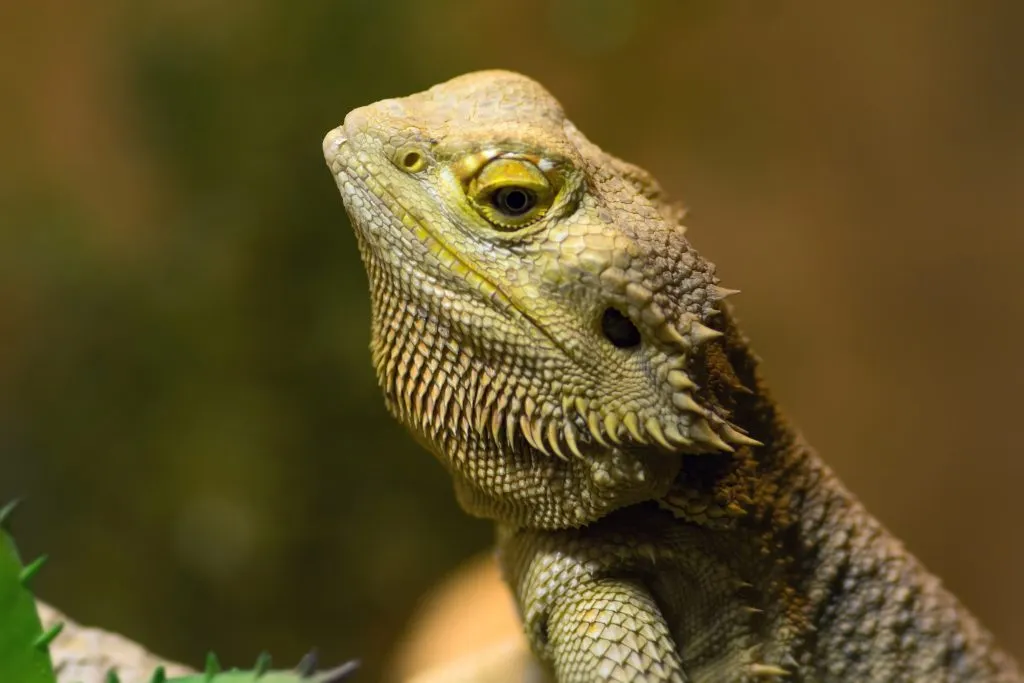
Bearded dragons are ectothermic, which means they rely on external heat sources to regulate their body temperature.
In the wild, they will bask in the sun to warm up and seek shade to cool down. As a result, their color can change to help them better absorb or reflect heat.
When a bearded dragon is too hot, it may turn a lighter shade to reflect the excess heat. Conversely, it may turn darker to absorb heat better when cold.
This type of color change is just one of the many ways that bearded dragons have adapted to their environment.
You might also note that your reptile turns darker towards the morning, only to revert back to its original color a few hours later.
As long as your pet lizard shows no signs of illness or stress (inactivity and lack of appetite are the most common), there’s no cause for worry.
Just ensure the temperature of your dragon’s terrarium is stable and adequate to keep it warm and happy. For adult reptiles, this means basking areas should range from 94 to 105 F. Conversely, juveniles require basking temperatures ranging between 105 to 110F.
7. Mating Requirements
Beardies, both males and females, can change colors when the mating season draws close. One of the main reasons bearded dragons get darker during the mating season is changes in their hormones.
During this time, male beardies produce higher levels of testosterone, which can cause their skin to darken. This color change is a way for the males of the species to attract a mate by showing off their dominance and strength.
Female bearded dragons can also become darker in color during the breeding season, but for different reasons. Female beardies produce high levels of estrogen, which can cause their skin to become darker, but also prepares their bodies for breeding.
Along with color changes, bearded dragons may also exhibit changes in their behavior during the mating season. Male bearded dragons may become more aggressive and territorial as they try to establish dominance over other males in the area.
Female bearded dragons may also exhibit changes in behavior, such as digging and preparing a nest for their eggs.
Mating season for the species generally occurs between spring and early summer. So, if you find your dragon getting darker during this timeline, with the relevant behavioral changes, you’ll know it’s preparing for the mating season.
8. Brumation
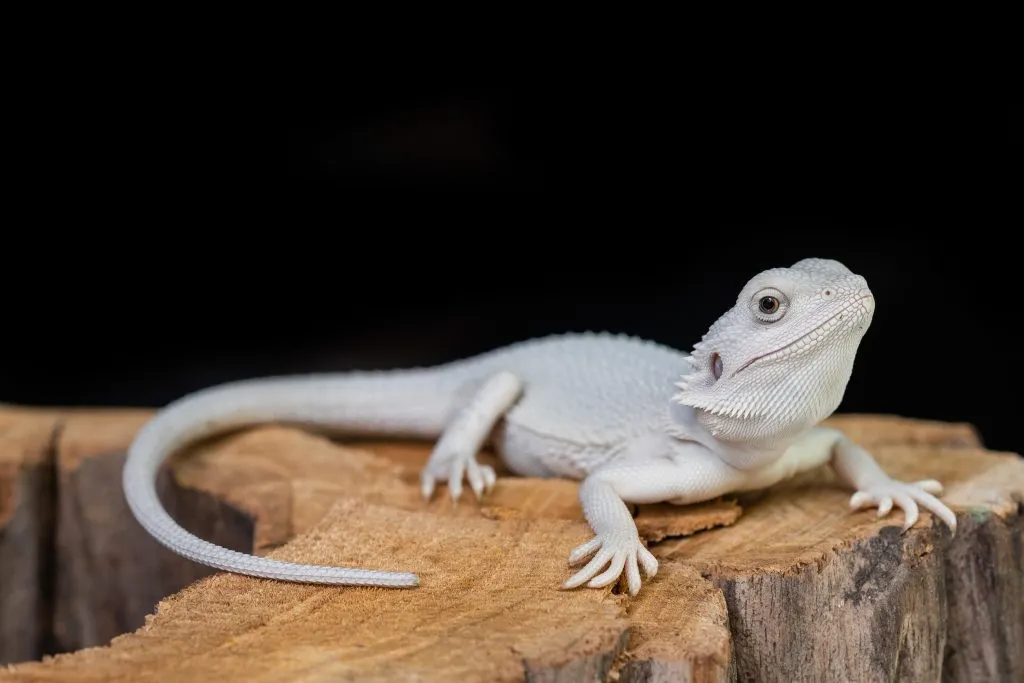
Brumation is a natural process in many reptiles, including bearded dragons. It is similar to hibernation, but it is not the same thing. During brumation, bearded dragons become less active, eat less, and sleep more. They also tend to darken in color.
The darker coloration allows bearded dragons to absorb more heat from their environment. Bearded dragons are ectothermic, meaning they rely on external heat sources to regulate their body temperature.
Beardies can absorb more heat from the sun or the heat lamp in their enclosure by darkening their skin. If you notice that your bearded dragon is getting darker in color, especially during winter, it could be a sign that it is entering brumation.
Beardies coming out of brumation can also experience skin darkening. This is generally because your reptile is adjusting to lighting, temperatures, and changes in appetite.
This type of skin darkening (pre or post-brumation) is natural and doesn’t require much input from reptile owners as a cure or solution.
Observe your lizard closely during this time for any signs of sickness, and if you’re a first-time bearded dragon parent, it’s best to get in touch with your vet to understand how brumation works and what you can do to help your pet through it.
9. Genetics
Bearded dragons come in a wide range of colors, from light yellow to dark brown and everything in between. A combination of genetics and environmental factors determines these colors.
Some bearded dragons are genetically predisposed to a specific color or pattern, while others may change color due to environmental factors such as diet, temperature, or stress.
When it comes to bearded dragons darkening in color, genetics can play a role in some cases. For example, some bearded dragons may have genes that cause them to darken as they age, while others may have genes that keep them a lighter color throughout their lives.
So, suppose your scaley lizard is turning dark in color, and illness, stress, fear, impaction, temperature changes, mating requirements, or brumation aren’t the cause. In that case, it’s possible your pet is genetically predisposed to look the way it does.
10. Dehydration

Skin darkening can be a sign of dehydration in beardies. But it’s important to know whether your pet is dehydrated before taking action.
One way to tell if your dragon is dehydrated is to pinch the skin on its back gently. If the skin takes a few seconds to return to its original position, your pet may be dehydrated. Other signs of dehydration in bearded dragons include sunken eyes, lethargy, and loss of appetite.
If you believe your bearded dragon is dehydrated, it’s best to take quick action. First, ensure your pet has access to plenty of fresh water. You can also try offering it water-rich foods like cucumbers or strawberries.
In addition to providing your reptile with plenty of water, it’s essential to ensure their habitat is set up to promote hydration. This includes providing a shallow water dish for soaking and regularly misting their enclosure.
Conclusion
We’re at the end of our bearded dragon-centric feature and hope all your skin discoloration queries have been answered. As you’re likely aware, your dragon’s skin turning darker isn’t always something to worry about.
Still, because skin darkening is also linked to factors like illness and dehydration, dragon parents shouldn’t ignore the problem at the outset. It’s always smart to dig a little deeper until you’re sure your pet isn’t suffering in any way.
- Enchi Ball Python: A Unique and Stunning Morph of Python regius - March 27, 2025
- Emerald Tree Monitor: The Enigmatic Green Guardian of the Rainforest - March 26, 2025
- The Egyptian Cobra (Naja haje): A Fascinating Serpent - March 25, 2025
